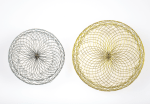Drug-eluting balloons (DEB) with paclitaxel have shown efficacy and safety in the treatment of femoropopliteal disease. Sirolimus-eluting balloons (DEB S) are currently being introduced. This new drug acts during the cellular resting phase (G0) and is considered potentially more effective than paclitaxel, which is a cytostatic drug. However, there is no conclusive evidence in this...
TAVR vs SAVR in Los Risk Patients: 10-Year Outcomes of the NOTION Trial
Transcatheter aortic valve replacement (TAVR) has revolutionized the treatment of patients with severe aortic stenosis (AS). Randomized studies have shown the benefits of TAVR in patients at prohibitive surgical risk, as well as high and intermediate risk. The NOTION trial (Nordic Aortic Valve Intervention Trial) randomized patients with low risk severe AS to TAVR and...
Evolution of Leak in Left Atrial Appendage Closure
Atrial fibrillation is common in elderly people and is associated with a higher risk of ischemic stroke. Left atrial appendage occlusion (LAAO) is a valid strategy, especially in patients at high risk of bleeding. The presence of peridevice leak (PDL) has been linked to stroke, although some analyses, such as the PROTEC-AF Study, suggest that...
TAVR in Bicuspid Valves
Bicuspid aortic valve (BAV) disease affects 1%-2% of the population and manifests with severe aortic stenosis in the middle-aged. It characterizes for a very different anatomy with more calcification than the tricuspid aortic valve. At present, surgical aortic valve replacement (SAVR) is the first treatment indication. TAVR in this scenario has shown, in different studies,...
Acute Myocardial Infarction After TAVI: Retrospective Analysis of >200,000 Implants
Coronary artery disease is common among patients considered for transcatheter aortic valve implantation (TAVI). With the expansion of the indication for TAVI to a population with lower surgical risk, and therefore younger, there has been a gradual increase in the incidence of coronary events. However, there is limited data on treatment strategy and outcomes in...
ACC 2024 | REDUCE AMI: Beta-Blockers after Myocardial Infarction and Preserved Ejection Fraction
Most clinical trials have shown benefits of beta blockers after acute myocardial infraction, including patients with extensive AMI, and these were carried out in the era before AMI was diagnosed with biomarkers and prior to treatment with coronary angioplasty, use of antithrombotic agents and high intensity statins, and angiotensin-aldosterone system inhibitors. The aim of this...
ACC 2024 | DEDICATE Trial: Transcatheter or Surgical Treatment of Aortic Valve Stenosis
In recent years, TAVR has been increasingly used; however, when it comes to younger, lower risk patients, its use is still challenged. In this context, there is limited information and we lack randomized studies on “real world” cohorts. The DEDICATE randomized 1.414 patients over 65 with severe symptomatic aortic stenosis. 701 of these patients received...
NOTION Trial: 10 Year Outcomes, TAVR vs. SAVR in Low Risk Patients
Transcatheter aortic valve replacement (TAVR) has revolutionized the treatment of patients with severe aortic stenosis (AS). Randomized studies have shown the benefits of TAVR for treating inoperable patients, as well as high and intermediate risk patients. The NOTION (Nordic Aortic Valve Intervention Trial) randomized patients with low risk severe AS to TAVR or SAVR (surgical...
Post TAVR Long Term Outcomes in Patients with Chronic Inflammatory Disease
Patients suffering from immune-mediated chronic inflammatory disease (CID) face a high risk of developing heart disease, including aortic valve disease. Inflammatory vascular disease when triggered by an autoimmune condition, can prompt a harmful response leading to valve degeneration, with increased calcification and fibrosis, and the associated progression of stenosis, failure or both. Prior research has...
TAVR in Low Risk Patients: 10 Year Evolution
The Treatment of severe aortic stenosis has experienced a significant revolution with TAVR, especially in high and intermediate risk patients, and it is now extending to low risk patients. In the US, nearly half of patients under 64 are being treated with TAVR. One of the fundamental questions that still remains unanswered revolves around device...








